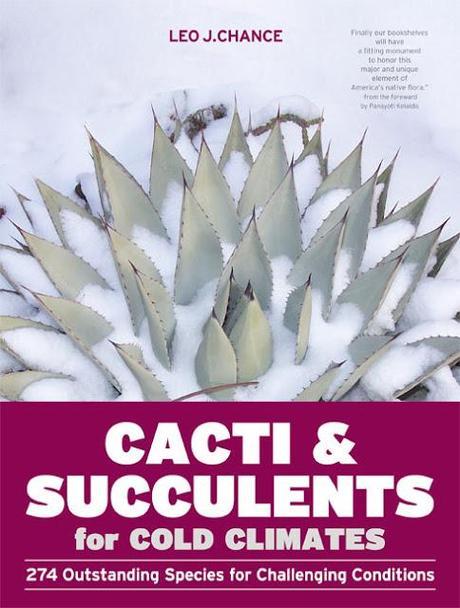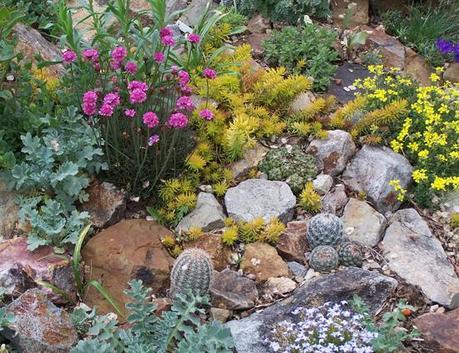Thinking about making an arid or xerophytic bed? Getting more into cacti and succulents and wanting to know more about growing this fabulous group of architectural plants in a colder region? Do you want to grow some of these plants outside but afraid that (British) winters may be too cold or wet for all of them? Then do get this most helpful and well written book, for your questions are more likely to be answered!

As I ponder myself on the idea of making a dedicated arid bed for the first time at the front of our house (the raised beds in our new area do not count) I am pleased to have got hold of this book which I have found most helpful in more ways than one. Not only does it list a selection of cacti and succulents, chosen for their suitability in being grown in colder regions, but it also gives cultivation hints on the best way to grow them. Extra information is also given on individual plants listed, on top of the general recommendations, to help them sail through cold (and wet) winters.
Most of the plants that are listed were chosen based on the author's own experience in growing them in his own garden for many years, in Denver, a zone 5 (winter minimums down to -20F/-28C) region. Several of the photographs featured were taken from his own garden, and from the gardens of other generous enthusiasts, all showing how well their plants are thriving in their gardens that are colder and outside the 'cactus country'.

Cacti and some companion plants in the author's garden (photo from Timber Press website)
Although most of the cultivation notes were based on conditions found in colder regions of North America, there are also plenty of references of growing these succulents in areas that also experience wet winters. Conditions that are similar to most parts of the British Isles which makes some of the advice applicable to the UK, as well as some direct references to growing them here.
Without giving away too much, the book has sections on understanding hardiness, cultivation notes, propagation, watering and water requirements, lists of recommended cacti and other succulents, and even companion planting. The book is written in a way that it is easy to understand and practical, giving plenty of hints and tips to guide someone wanting to take on the challenge of growing cacti and succulents in colder regions.
On a personal note, it was great and definite plus points to read advice on making raised beds, the need for winter sun, planting mix, and if needed the use of frost fleece and rain shelters. Details like these tend to be omitted in other books but are actually very helpful on a practical level. A section on the importance of provenance towards influencing the potential for cold hardiness of plants is also there, a section that I was really pleased to see.
The only minor criticism I have for this book are the small photos on the individual plant section. I wish they were bigger to enhance appreciation of the plants mentioned. But apart from that this book is a very welcome addition to our library that no doubt we will refer to many times through the year. And if you're into cacti and succulents, or at least starting to venture into it, you'll find it as useful, informative, and entertaining to read as we did.
Read a fun interview of the author Leo J. Chance on the Timber Press Blog here.
Mark :-)

